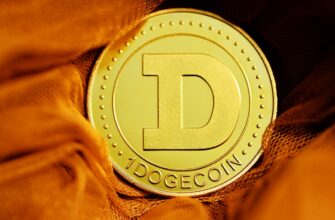- What Are Ethereum Token Locks and “No Lock” Alternatives?
- Why Token Locking Exists in Ethereum Projects
- The Emergence of “No Lock” Tokens on Ethereum
- Key Benefits of No Lock Token Models
- Potential Risks of Unlocked Token Systems
- How to Identify Authentic No Lock Tokens
- FAQ: Ethereum Token Locks Explained
- Navigating the Future of Token Freedom
What Are Ethereum Token Locks and “No Lock” Alternatives?
In Ethereum’s ecosystem, token locking refers to restricting transfers of cryptocurrency tokens for a predetermined period. This mechanism, often enforced through smart contracts, prevents investors or team members from selling tokens immediately after launch. Conversely, “no lock” tokens operate without these restrictions, offering immediate liquidity and flexibility. This guide explores the implications of both approaches, focusing on the growing demand for unrestricted Ethereum tokens.
Why Token Locking Exists in Ethereum Projects
Developers implement token locks to:
- Prevent market dumping: Stop early investors from crashing token prices via mass sales
- Build trust: Demonstrate long-term commitment to project development
- Ensure fair distribution: Gradually release tokens to avoid supply shocks
- Meet regulatory compliance: Align with securities laws in some jurisdictions
Typical lock periods range from 6 months to 3 years, with vesting schedules releasing tokens incrementally.
The Emergence of “No Lock” Tokens on Ethereum
“No lock” tokens challenge conventional locking models by offering:
- Instant liquidity for holders
- Reduced complexity in tokenomics
- Enhanced market-driven price discovery
- Appeal to decentralized ethos through unrestricted ownership
Projects like some DeFi governance tokens and meme coins adopt this model, prioritizing transparency and immediate utility over artificial scarcity.
Key Benefits of No Lock Token Models
- Investor freedom: Trade or transfer tokens anytime without restrictions
- Reduced rug-pull risk: Eliminates sudden unlock events that crash prices
- Simplified compliance: Avoids complex vesting schedule management
- Market efficiency: Prices reflect real-time supply/demand dynamics
- DAO-friendly: Enables immediate community governance participation
Potential Risks of Unlocked Token Systems
- Early sell-off pressure: Team members or whales may dump tokens immediately
- Reduced long-term alignment: Less incentive for developers to sustain projects
- Volatility spikes: Unrestricted trading can amplify price swings
- Scam vulnerability: Malicious actors can exit quickly after launch
How to Identify Authentic No Lock Tokens
Verify unrestricted tokens through:
- Smart contract audits: Check CertiK or Hacken reports for lock clauses
- Team wallet analysis: Use Etherscan to confirm zero vesting schedules
- Tokenomics documentation: Review whitepapers for “no lock” disclosures
- Community verification: Seek consensus in project forums like Discord
- DEX liquidity checks: Monitor if team wallets add liquidity without locks
FAQ: Ethereum Token Locks Explained
Q: Can “no lock” tokens still have transaction fees?
A: Yes. Unrestricted transfer doesn’t eliminate gas fees – all Ethereum transactions require ETH for processing.
Q: Do no-lock tokens violate securities laws?
A: Not inherently. Regulatory compliance depends on token classification (utility vs. security) and jurisdiction, not lock status.
Q: How do no-lock tokens impact staking?
A: Staking mechanisms function independently. Users can typically stake unlocked tokens immediately unless pool rules specify otherwise.
Q: Are decentralized exchanges (DEXs) better for trading no-lock tokens?
A: Often yes. DEXs like Uniswap enable permissionless listing, aligning with the unrestricted nature of these tokens.
Q: Can a project switch from locked to no-lock tokens later?
A: Only through governance votes or smart contract upgrades – existing locks can’t be removed without consensus.
Navigating the Future of Token Freedom
While token locks serve legitimate purposes in Ethereum’s landscape, the demand for “no lock” alternatives reflects crypto’s core values of autonomy and accessibility. Investors should weigh immediate liquidity benefits against potential volatility, verifying claims through blockchain explorers and audits. As regulatory frameworks evolve, these unrestricted models may redefine how projects balance investor protection with decentralization principles.








